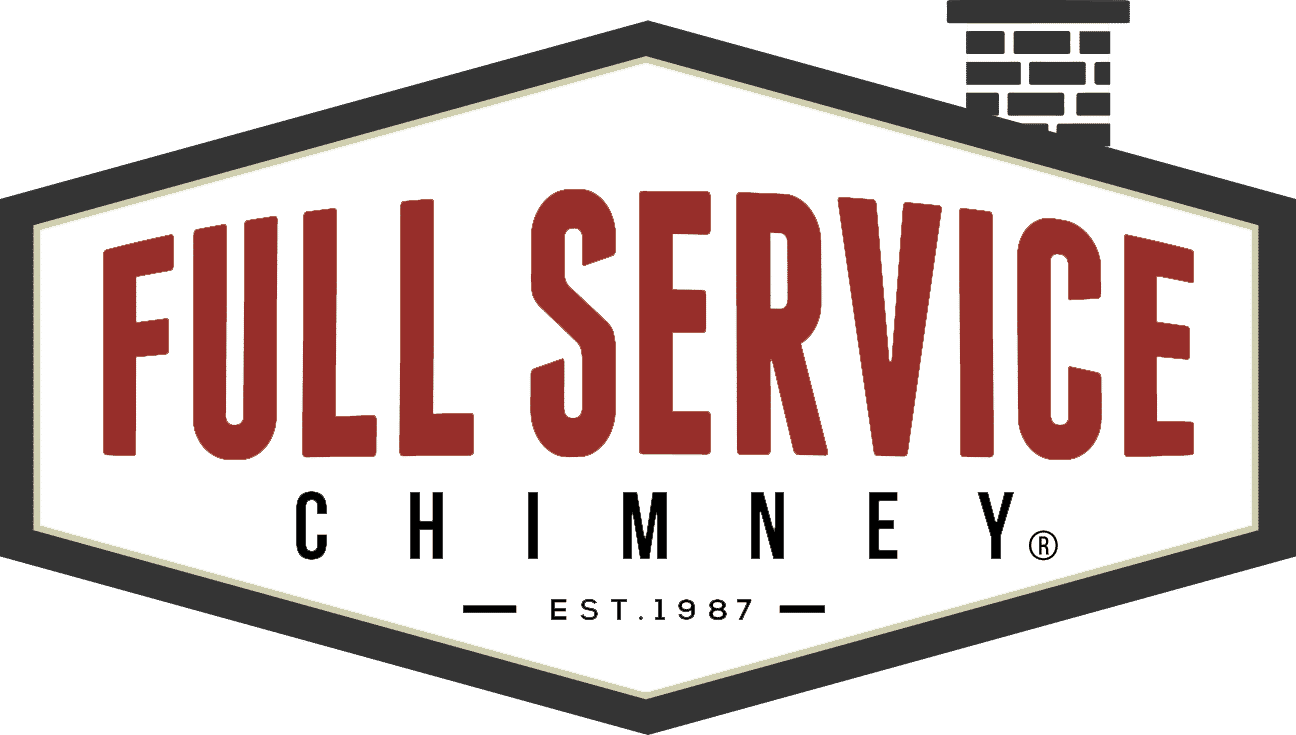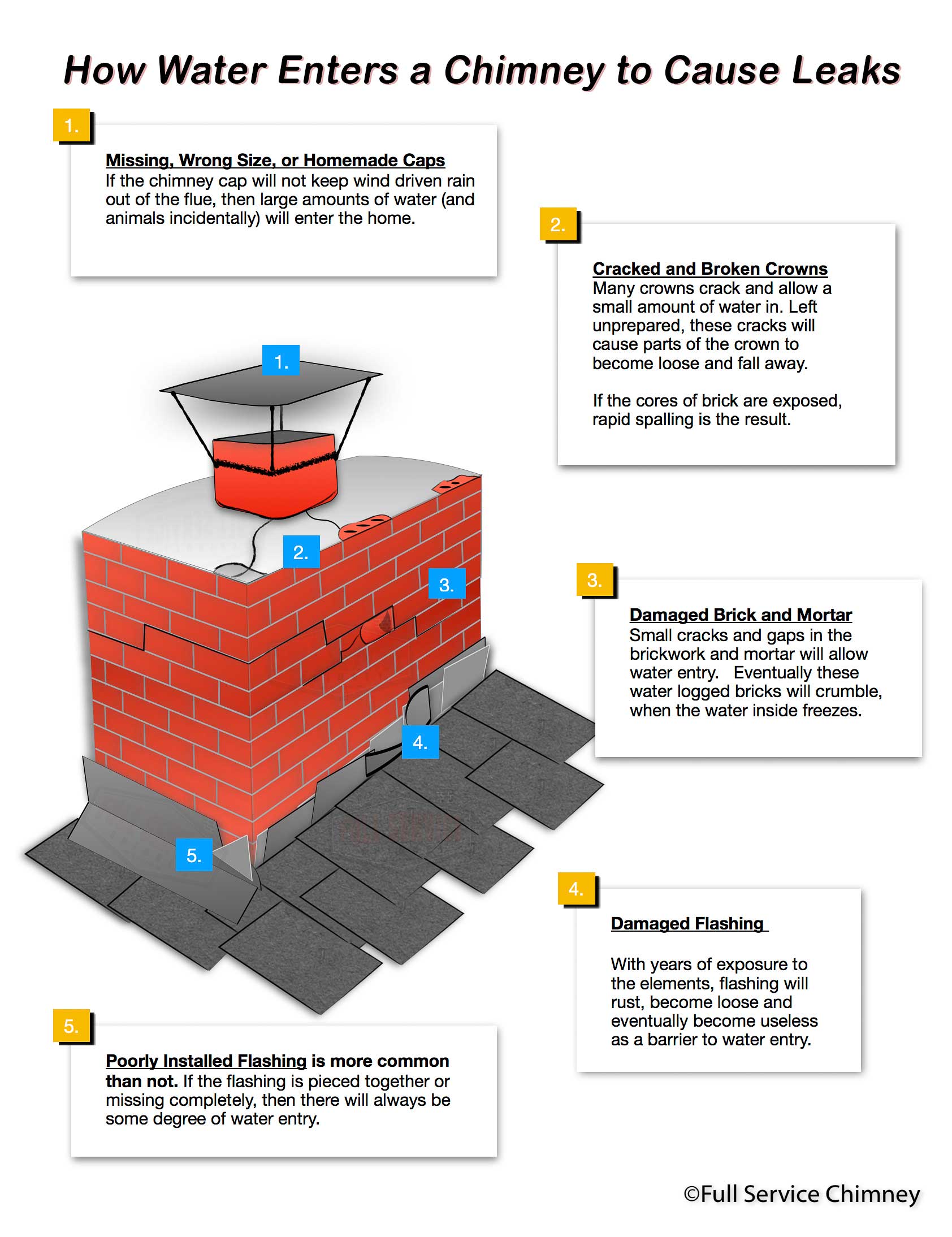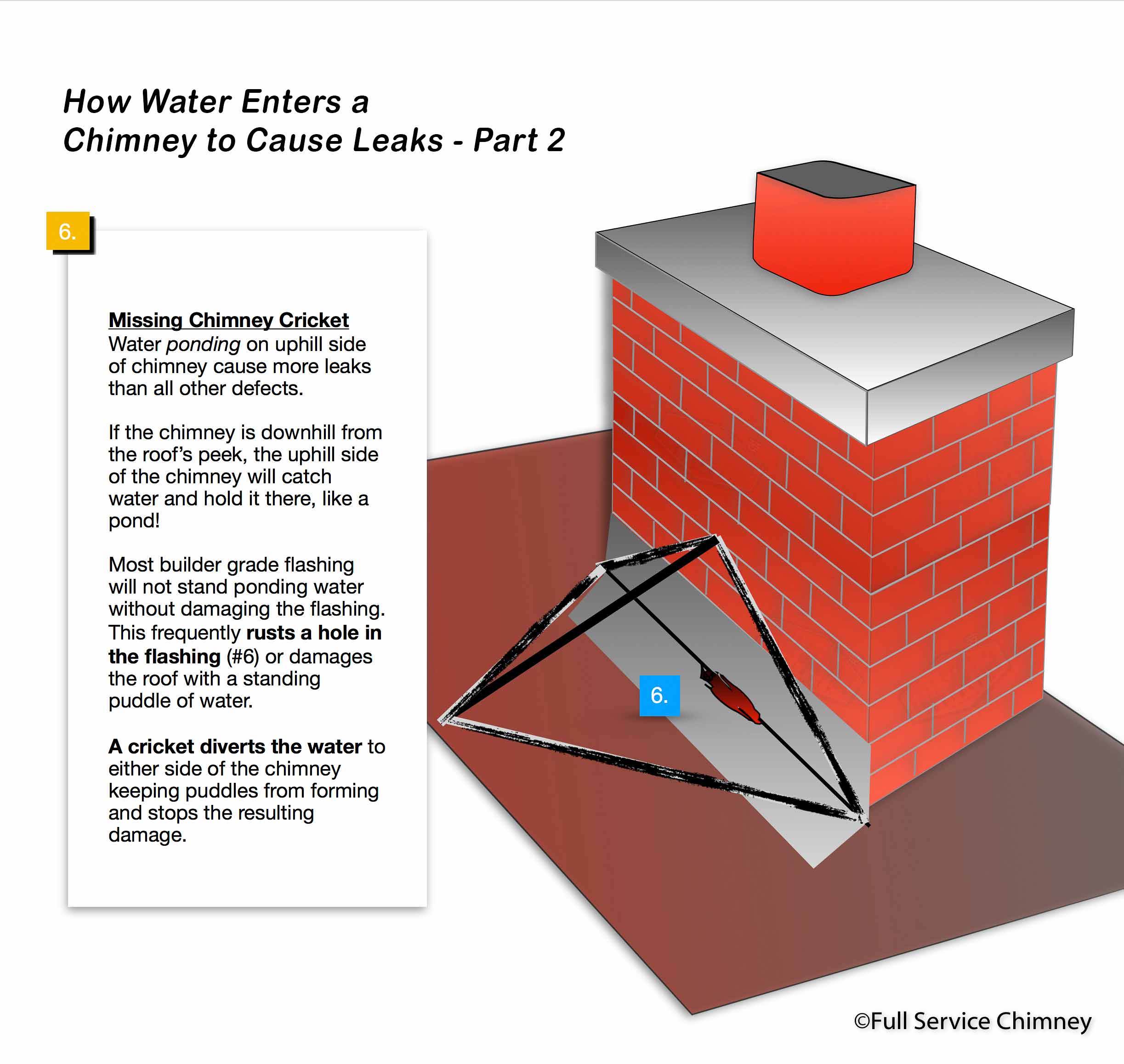If you’re wondering how to fix chimney leaks, then you’ve come to the right place. This post will discuss do-it-yourself leak repairs, but first, we’ll dive right into the how and why of leaky chimneys and different areas you might find a chimney leaking into your home.
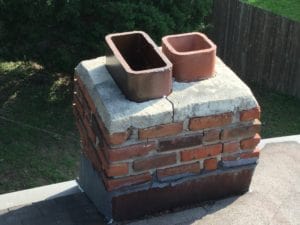
Chimney flues that are missing caps leave holes in the home open to pests and debris.
All chimneys share a common design theme, that is they require a “hole” in your home (assuming the fireplace is being used). It is this hole that, unless properly engineered, will allow the leaking of water around the chimney. Many frustrated homeowners and chimney sweepers have tried different things to temporarily fix chimney leaks by just stopping water entry, often without success.
The key to successful chimney leak repair is understanding what water does and making repairs that are water-friendly.
Table of Contents
How Water Enters a Chimney to Cause Leaks
How to Find and Repair Leaks Around Your Chimney
The first step in any water leak problem is a rigorous inspection. Checking all areas exposed to rain and draining water is critical to solving the leak problem.
Gaps and cracks in a chimney that do not get significant exposure to water may be a safety problem, but will not be part of the chimney leaking issue.
By sizing up the defects, and examining the ways water interacts with them, will allow you to put maximum effort where it is most needed.
How Water Enters a Chimney to Cause Leaks
Chimney Leaks Commonly Found in Attics
By the time you find a fireplace leak, your attic is likely already suffering from water damage. Water entry gone undetected for too long is something we chimney sweeps see often, (especially in Kansas City with our unpredictable seasons).
Staining on the exposed chimney in the attic often reveals which side of the chimney water begins its travel to other areas.
Look for stains on the rafters close to the chimney as well as insulation with water damage on the attic floor. Knowing which side water is coming in on is powerful information!

Often the source of leaking turns out to be hidden in the attic, like this cracked chimney.
Frequently water entry is on the uphill side of the roof and chimney flashing (#6 – see below). Water stains that do not begin at the roof decking but a few inches below indicate water enters the chimney brickwork and is traveling past the flashing on the inside, only to exit again through an injury inside the attic (#2, #3 – see above).
How Water Enters a Chimney to Cause Leaks – Part 2 – Missing Chimney Cricket Cause Leaks and Rust
Is Your Fireplace Leaking?
Take a moment to look inside the fireplace for rust on the damper or staining on the lintel. Some fireplace water leaks are so significant that the damper gets rusty, causing it not to open or close properly. The mortar that holds the fireplace firebrick is often water-soluble. This will produce open mortar joints in the back wall of the firebox. In extreme cases, bricks will become loose.
Repairing all safety features of your fireplace damper or firebox is needed, and we always want to stop the chimney leak completely.

Example of a rusty fireplace damper
If we only patch the leak, then you’ll find yourself calling our fireplace repairman every year to fix the same chimney leak problem that caused your damage in the first place!
If fireplace leak damage is centered in the middle of the damper, and visible water stains are present on the flue tiles, confirm your chimney cap is there and doing its job (#1- see above). Even if there is a cap, if it’s too small, wind-driven rain often lets a notable amount of water in.
“An undersized chimney cap is like only wearing a ball cap in a rainstorm when you really need an umbrella.” – Bob Berry CSIA #2203
Water Leaks into Fireplace Ash Dump
The ash dump is the area just below the fireplace firebox floor. Ashes enter through an ash dump door (usually made of metal in the center of the firebox floor), and rest inside a chamber that can be accessed through a clean-out door in the basement. We carefully open the clean outdoor as sometimes so much ash has been “dumped in” that it is higher than the door opening.
This causes all the dirty ash to spill into the basement (an unwanted mess). With a flashlight and hand mirror, look for water stains along the interior walls and damp ashes. Water found in the fireplace ash dump can come from anywhere, but it’s still worth investigating to rule out water leaking in from the surrounding earth.
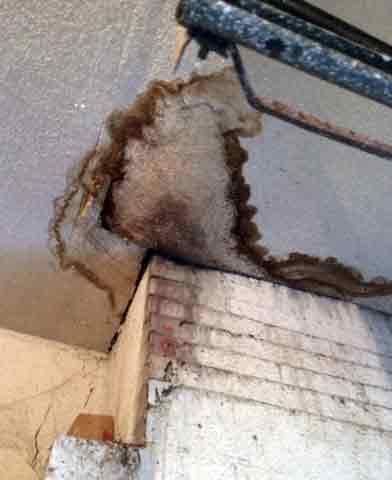
Chimney Leak Causes Water Stains on Ceiling
If there are no stains showing water draining down from above the door and there is pooling water in the bottom of the ash dump, this leads us to question if water entry is simply leaking in from the earth around your fireplace foundation.
DIY Chimney Leak Repairs
Now let’s discuss how to fix chimney leaks yourself. The best chimney leak repair is often outside the scope of average homeowners’ comfort. However, if you can safely get on the roof (remember your fall protection) temporary repairs will often yield temporary relief.
1. Cap Installation
First, measure the flue tile at the chimney top, then purchase and install the proper size chimney cap. Stainless steel caps are the best and they have a bonnet (roof of the cap) twice as large as the fireplace flue opening. Follow the manufacturers’ directions and make sure all fasteners are tight.
2. Repair the Crown/Cap
Chimney crowns are the roof of your brickwork. Any cracks or missing pieces allow water inside and quite possibly in large amounts!
The proper repair is to rebuild the crown with rebar and a quality cement mix.
Temporary relief with elastomeric or silicon-based products that seal the chimney crown. Since these are products of the painting industry, they tend to suffer from excessive sunlight exposure. A few years of chimney leak relief is all they will offer.
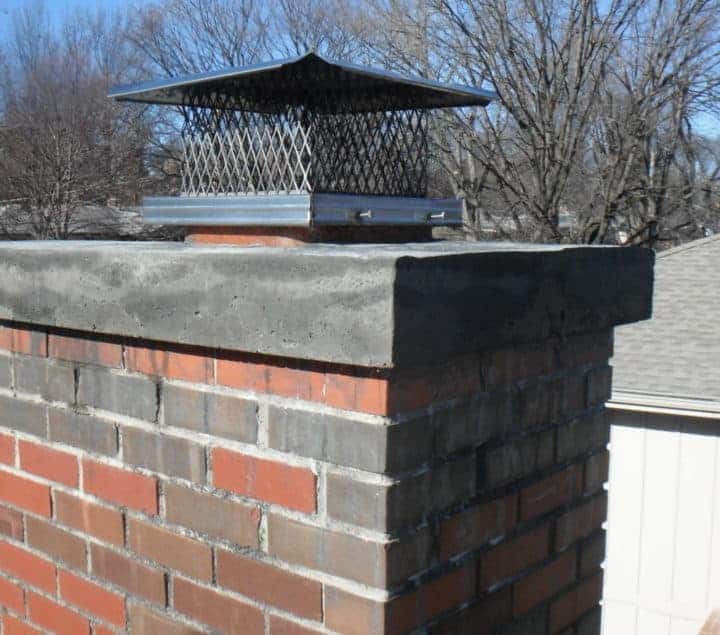
A proper crown pour requires forms (to hold the cement until hardened) rebar and bond break (around the flue tile and where the crown rest on the brickwork.)
3. Brick and Mortar Repair
Brick damage repairs done with clear painter’s caulk is a short-term solution. Since damaged brickwork is often crumbled, you can expect caulking to fall off within months. Only by demoing out soft mortar joints, removing cracked or spalling bricks, and tuckpointing or installing new bricks can a brick and mortar repair hope to last.
4. Damaged Flashing Repair
Flashing gets damaged by storms or rust. Sometimes the sealant used to bond flashing to the brickwork loses its flexibility and allows water to leak past it. Much like replacing caulking around doors or windows of the home, carefully scrape away the defective caulking and reapply with a flashing type sealant.
Some flashing repair products are a two-part kit, with a reinforcement fabric and elastomeric sealant. Embedding a fabric into the sealant will increase its life, but still, only a few years of chimney leak relief is the best they will offer. Only by removing and replacing the damaged flashing and surrounding roofing can we hope to produce a quality flashing repair.
5. Poorly Installed Flashing
Sometimes flashing was installed inadequately or in the wrong sequence with roofing. The result is chimney leaks from day one. A sealant system with fabric sometimes will slow down defective chimney flashing. More often than not, poor flashing is only helped by replacing all flashing, surrounding shingles, and tar paper.
6. Missing Crickets
If you see water entry in the attic on the uphill side of the chimney, we know a “cricket“ is needed so water is not ponding in this area. Often, ponding water will rust a hole in the simple flashing found on most chimneys. Code requires a chimney have a cricket if it is thirty inches or wider.
Full Service Chimney often installs crickets on all chimneys since this is where over one-half of all chimney leaks are from. If it is a rusty hole, sealant with fabric may help for a few months. Building and installing a cricket is a major chimney repair, one that should only be done by a quality service company that performs a water leak test at the conclusion of the installation.
7. Gas Chimney Condensation Issues
When it comes to water entry problems, we always verify the chimney has a gas appliance venting through it. Water issues are not always leaking from rain, rather a significant amount of water will fill the chimney anytime gas exhaust vent through a masonry chimney.
How Water Enters a Chimney to Cause Leaks Part 3 – Gas Chimney Condensation Issues Cause Leaks
Water condensation problems have become worse with the popularity of high-efficiency gas appliances, as their exhaust isn’t warm enough to keep the water produced by gas combustion in the form of steam.
Water will condense on the inside of the chimney to an amount that it will cause efflorescence on the outside of brickwork and if left unfixed, can destroy an otherwise “watertight chimney”.
Let Us Waterproof Your Chimney
In the event, your chimney is damp, but it hasn’t rained lately then gas condensation is suspected. We install gas appliance chimney liners that keep that moisture-laden exhaust contained and protect surrounding brickwork and your home from water damage.
Aluminum chimney liners can be found from local heating and air supply resources. You’ll need to know the length and height of your chimney and the BTU’s rating of the attached appliances to ensure the proper size. (FOR GAS APPLIANCES ONLY, NEVER ANYTHING THAT COULD BURN WOOD AND NEVER ANY FIREPLACE).
Gas appliances do have corrosive exhaust, so aluminum gas liners only have a few years of life. If possible, you should hire a certified chimney repair company to install a stainless steel liner sold and made for gas chimney relining.
Start By Inspecting the Chimney
Evaluation of your chimney’s real water issues, allows us to make simple adjustments that fix chimney leaks for short-term relief or provide long-term solutions.
If you’ve already made temporary patch repairs yourself and you’re still asking how to fix chimney leaks… then consider Full Service Chimney, your local qualified leak expert, and Call us today at 913-642-6171.
Let’s talk about our most effective methods for long-term solutions. We can explain clearly our highly specialized repairs that our certified sweeps perform daily for people just like you.
